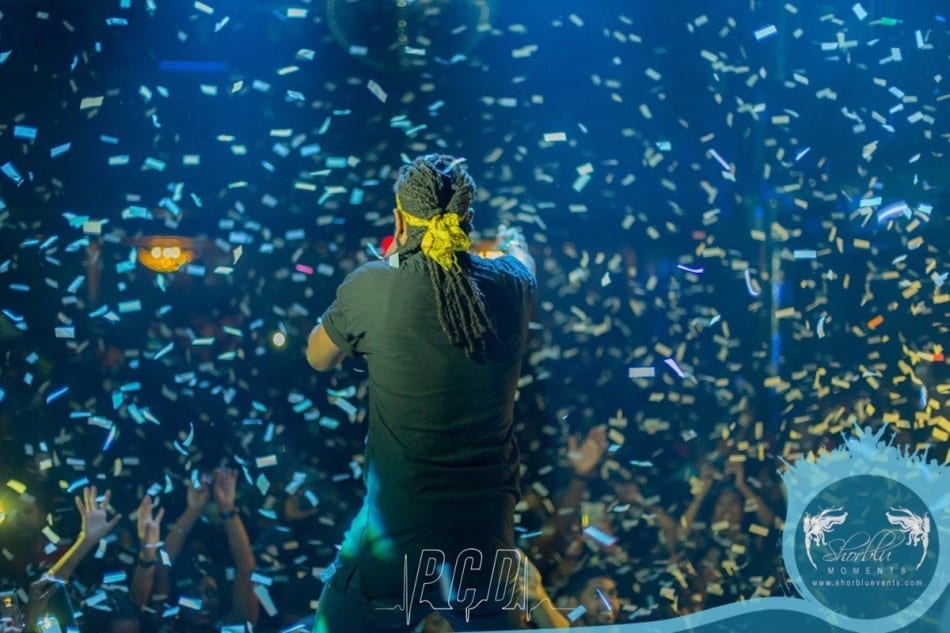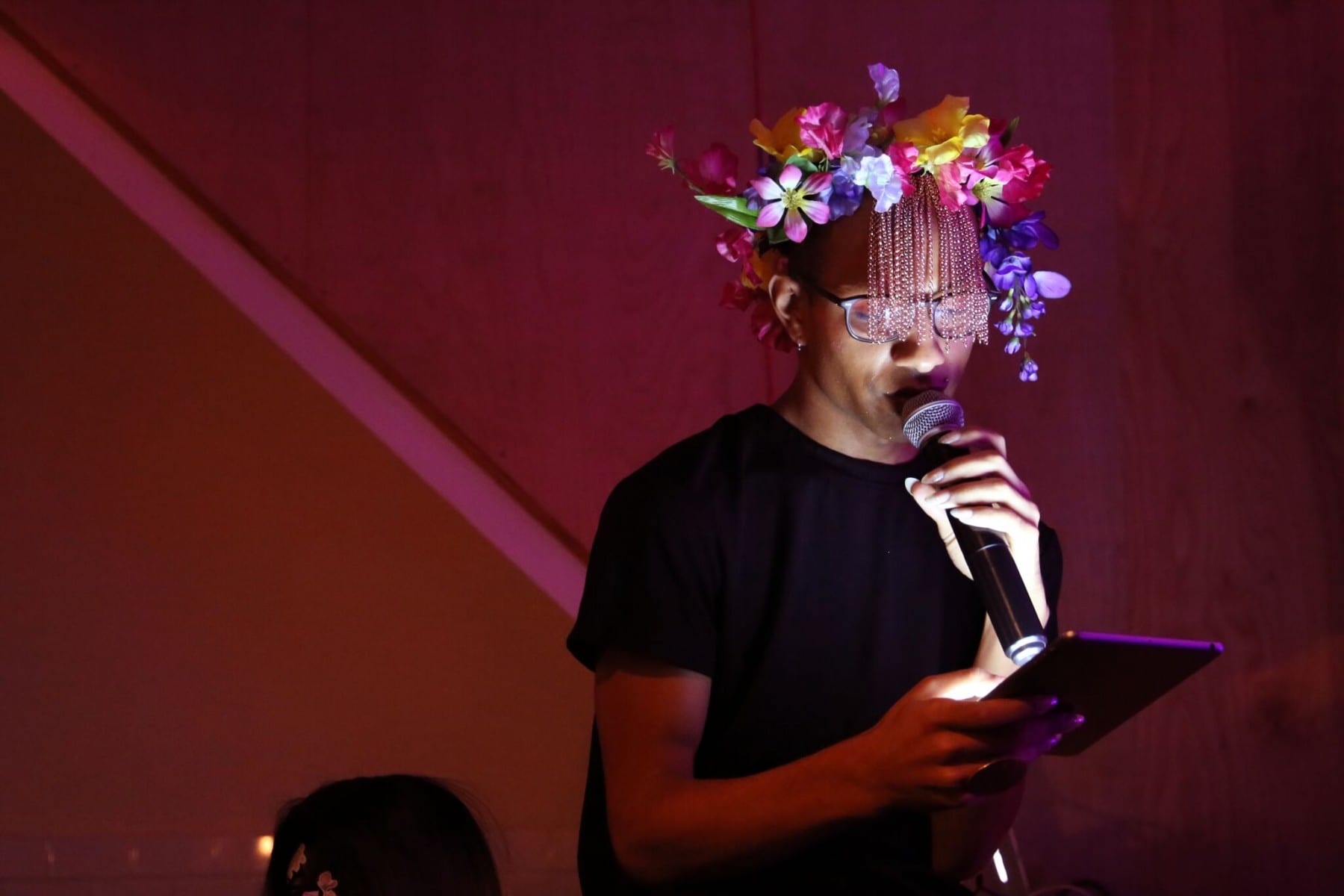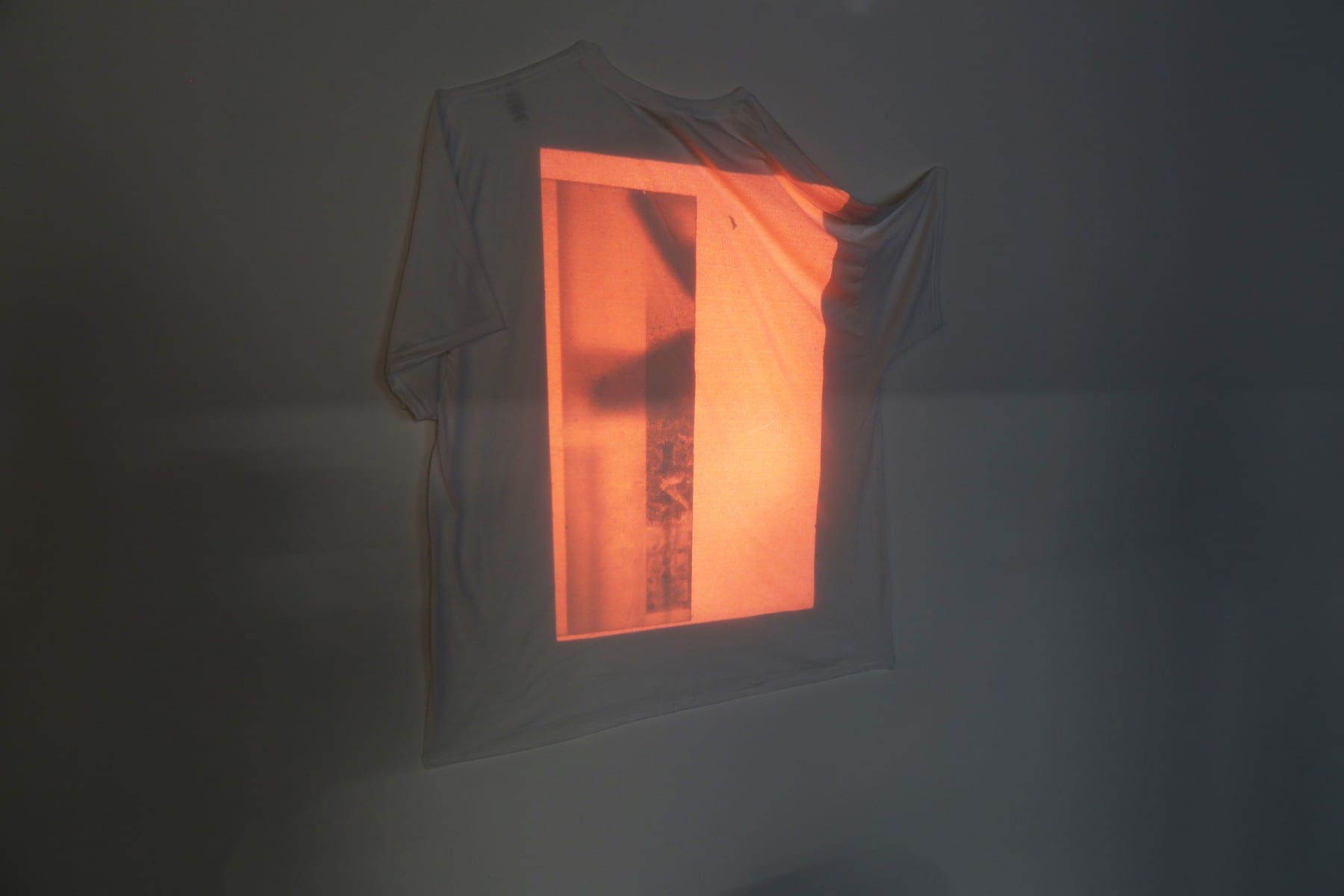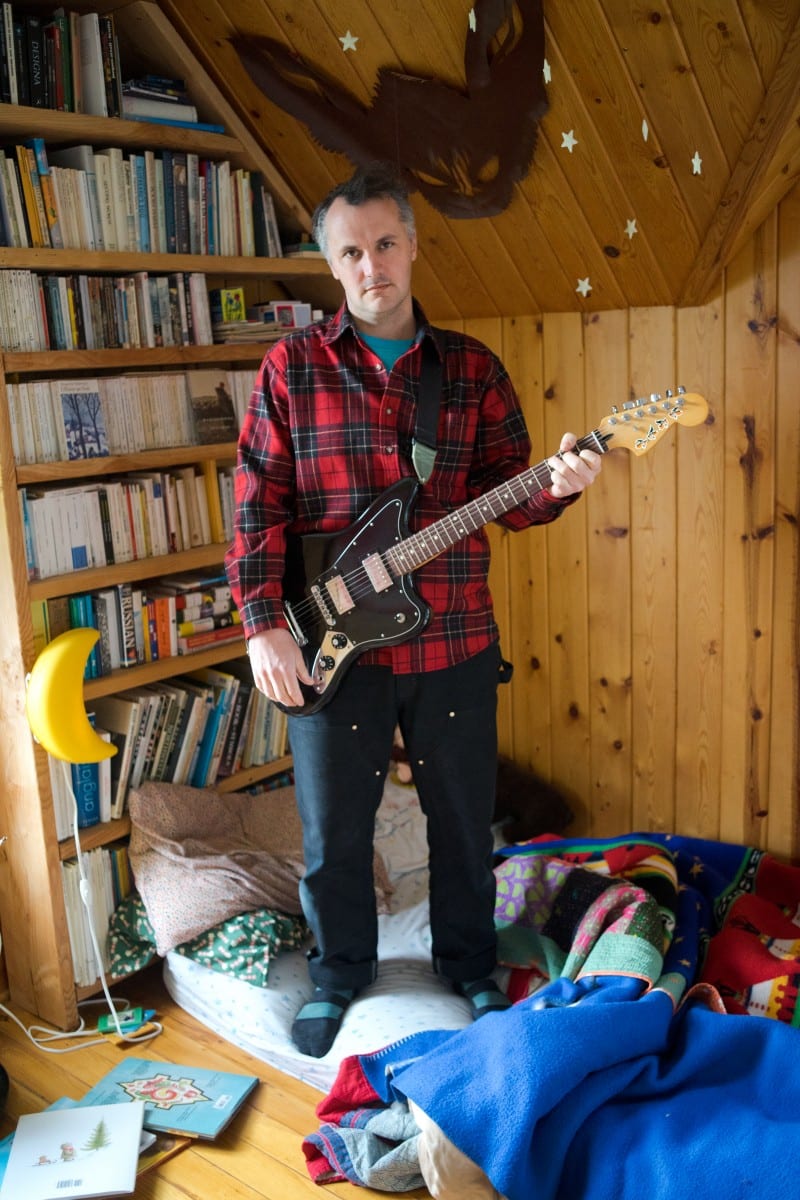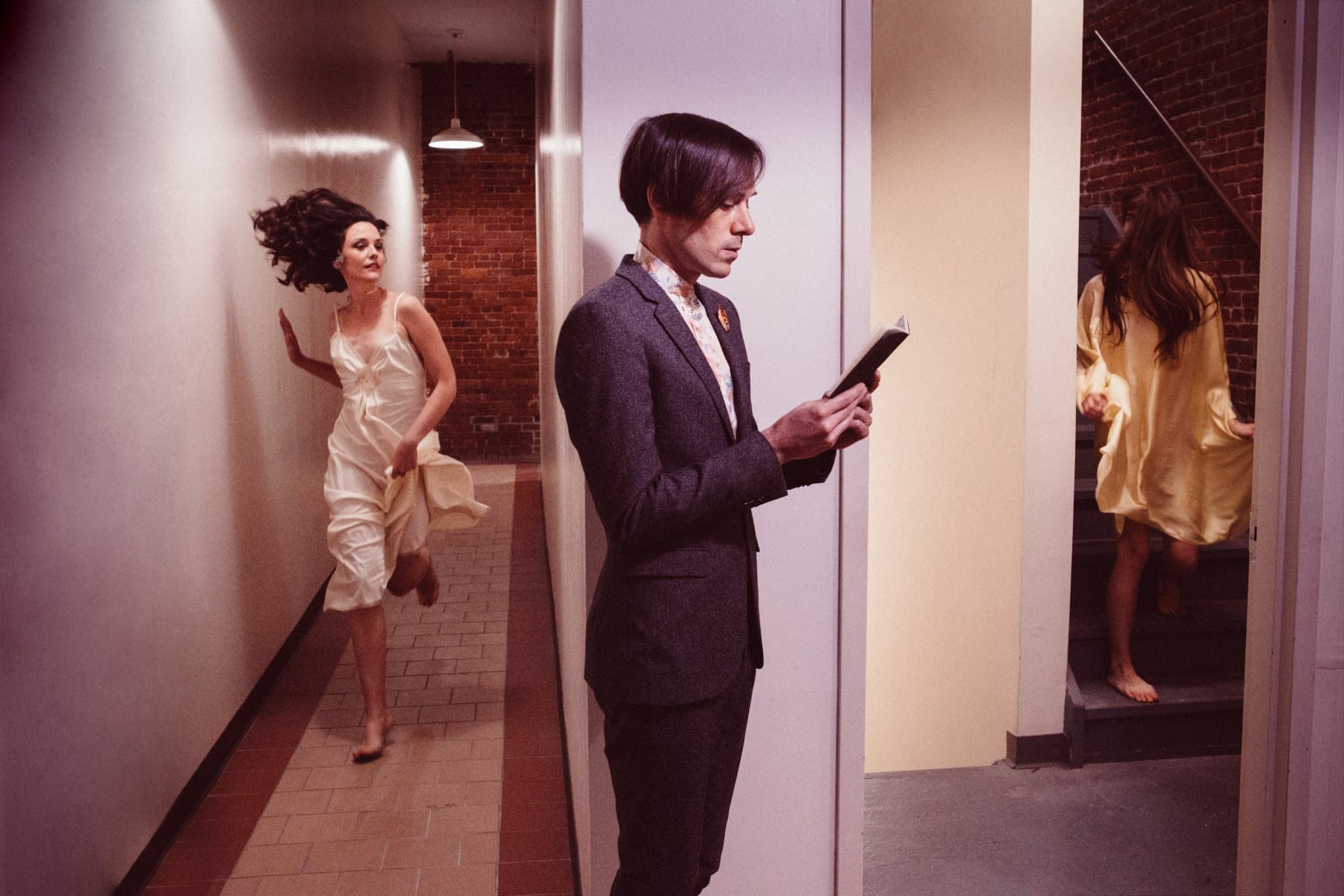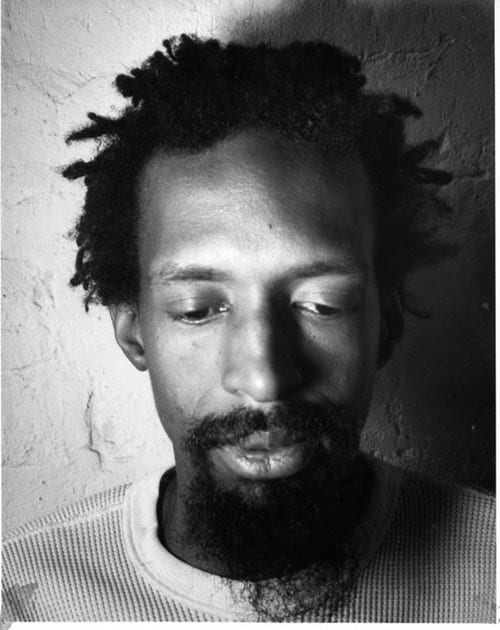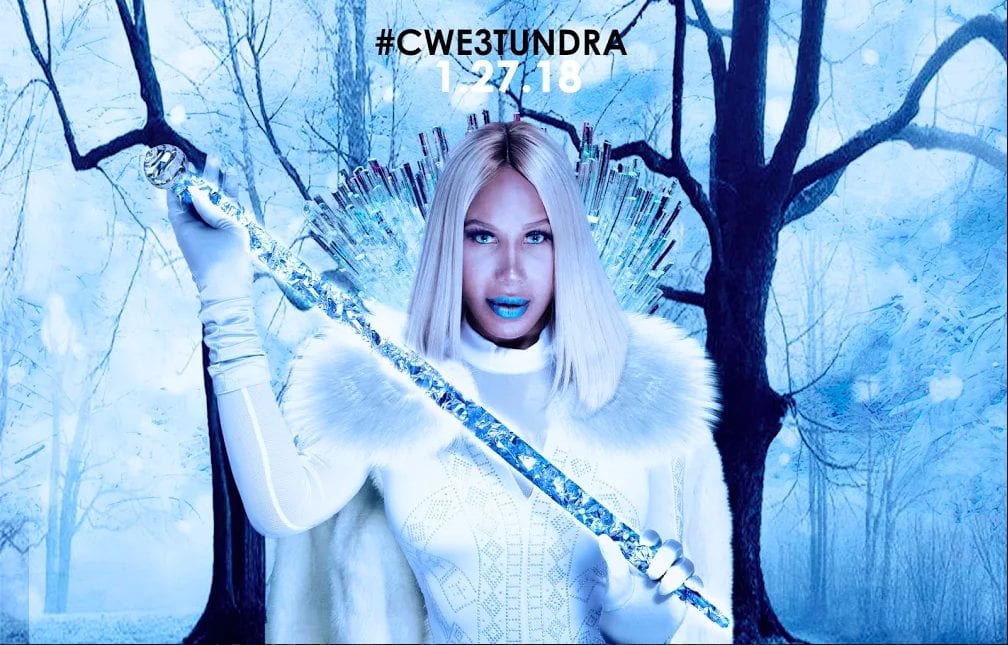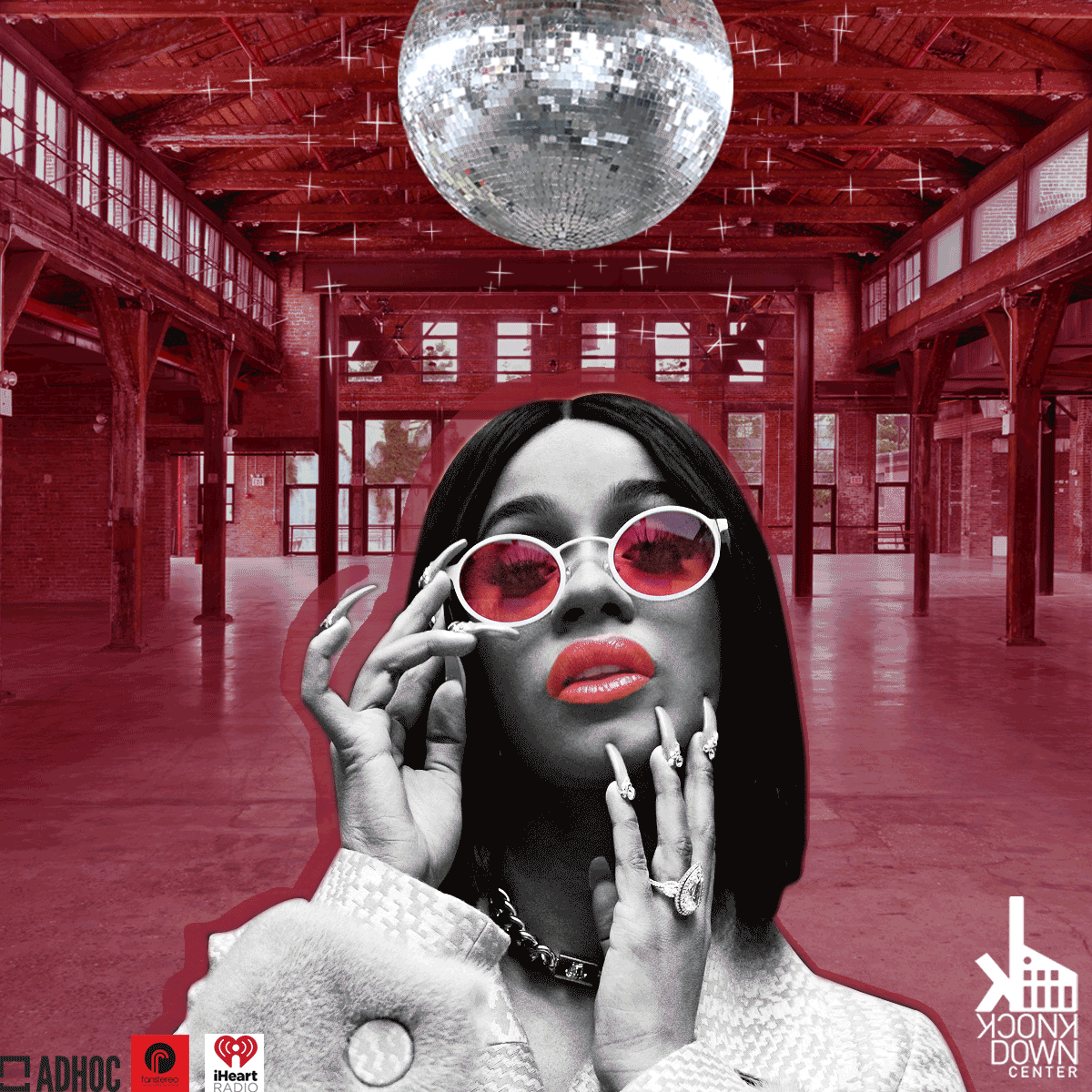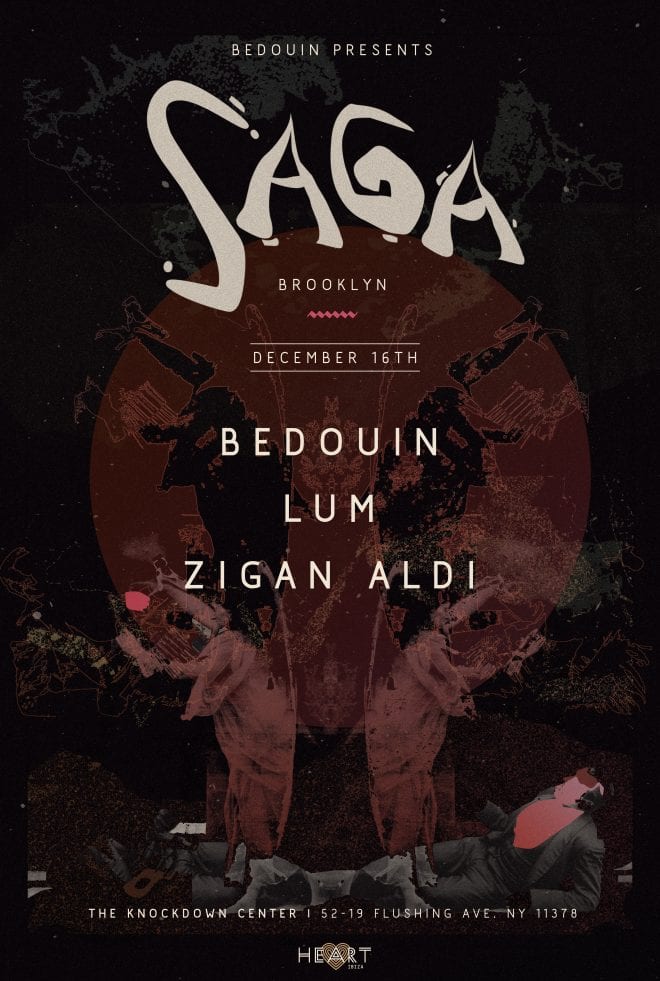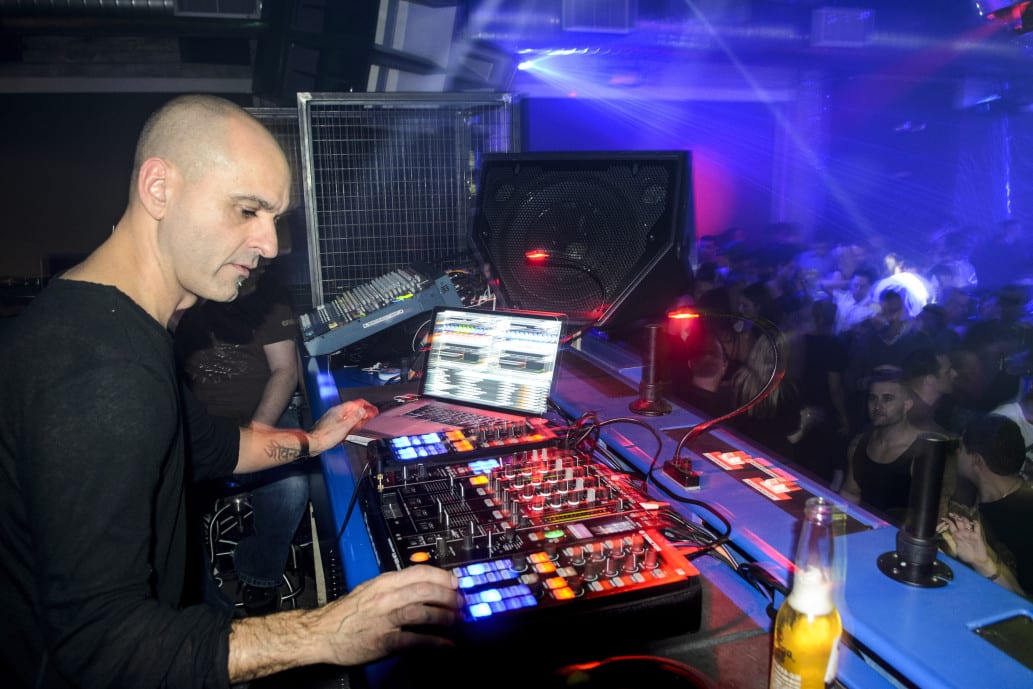Knockdown Center is pleased to present MATERIAL WITNESS WITNESS MATERIAL, a group exhibition on view March 3 – April 15, 2018. The exhibition brings together the work of Amber Atiya, Amy Khoshbin, Esteban Jefferson, DonChristian Jones, SomBlackGuy, Chris Watts, and Lachell Workman, all of whom embrace experimental and rigorous ways of considering how violence and resistance are inscribed on and internalized in the body. These artists employ diverse mediums to translate the aftermath of trauma and discrimination.
The exhibition considers the idea of a “material witness,” a legal term referring to an individual with valuable information that may aid in the outcome of a criminal trial. In testimony, a “material witness” recalls and articulates what was seen as it relates to the case. Their disposition and other physical cues also play a role in transmitting information—here, the ‘material’ refers to subjective information rather than physical evidence. Additionally, visual evidence is often considered insufficient in the court of law, as proven by recent instances of video documentation of police violence which rarely result in a conviction. If the video camera, a supposed ‘objective eye’ tasked with documenting reality and a material witness, an individual whose memory is inherently bias, both fail to uphold as evidence in the court of law, then what degree of representation is considered sufficient?
The exhibition’s title MATERIAL WITNESS WITNESS MATERIAL inverts this term to reflect the ways in which translation and interpretation are integral to both the legal process and the artworks included. Drawing from these same evidentiary sources—footage of police violence, legal documents, histories of discriminatory practices—the artists take various approaches to express the impact of systemic violence on the body. Some artists in the exhibition evoke familiar bodily forms through materials such as cracked asphalt and sheer fleshy textiles. Others infiltrate, alter, and revise government documents as a gesture of resistance, while some directly represent instances of police and legal injustice.
Exhibition Events
Sunday, March 25, 6:00pm
Artist Roundtable
In conjunction with the exhibition MATERIAL WITNESS WITNESS MATERIAL, participating artists Esteban Jefferson, DonChristian Jones, Chris Watts, and Lachell Workman will discuss their respective practices and overlapping concerns from racial discrimination to systemic violence within the criminal justice system. Details here.
Amber Atiya is a multidisciplinary poet whose work incorporates elements of performance, book arts, and visual arts. Her poems and nonfiction have appeared in Boston Review, Nepantla: A Journal Dedicated to Queer Poets of Color, Pen America, Poets & Writers Blog, and elsewhere. A proud native Brooklynite, she is the co-editor of Sinister Wisdom #107: Black Lesbians–We Are the Revolution! and a member of a women’s writing group that will be celebrating 16 years in 2018. Her chapbook the fierce bums of doo-wop (Argos Books) is currently in its second printing.
Morgan Bassichis is a comedic performer whose shows have been described as “out there” (by Morgan’s mother) and “super intense” (by Morgan). Morgan has performed at Artists Space, Danspace Project, Dixon Place, MoMA PS1, Poetry Project, Portland Institute for Contemporary Art, and the Whitney Museum. Morgan’s musical adaptation of Larry Mitchell and Ned Asta’s 1977 manifesto-fairytale, “The Faggots and Their Friends Between Revolutions,” was featured at the New Museum as part of Trigger: Gender as a Tool and a Weapon. Morgan’s yearlong chronicle of unfinished business, “To Do 2017,” can be found at online. Morgan’s show, “More Protest Songs!,” will run at Danspace Project April 19-21, 2018.
Esteban Jefferson is a painter born, raised, and still living in New York. Lately, he has been making paintings of Raymond Santana. It was a celebration. All the guys jumped around, they’re “rahhhh,” they all cheering. “You goin’ home, it’s over, you goin’ home!” The corrections officer said “well you know, it’s a lot of people out there. You wanna go through the back? I’ll get a car for you, you know you can go out the back way.” And I said, “boy, I’m a free man, I’m going out the front! Open that door and let’s go.
DonChristian Jones is a Philly born, New York based, visual artist, rapper, singer/songwriter, and producer. His work spans musical and time based performance, rap mixtapes, video and public murals, blending genres of painting and hip hop, referencing classical and contemporary styles. Much of his work today is informed by his time spent painting murals on Rikers Island with youth inmates. Don has shown and performed at The Whitney Museum, MoMA Ps1, Webster Hall, and Danspace. Play These at My Funeral, Don’s debut album will be released this Spring 2018.
Amy Khoshbin is an Iranian-American Brooklyn-based artist merging performance, video, collage, music, and fabric arts to examine our individual and collective compulsion to create, transform, and sometimes destroy the stories of who we are and who we think we should be. She produces media and mythologies using humor and a handmade aesthetic to throw a counterpunch at the high-definition, profit-generating codes and signals that American audiences are trained and accustomed to consuming. She has shown at venues such as Brooklyn Academy of Music (BAM), Times Square Arts, The High Line, Leila Heller Gallery, Mana Contemporary, National Sawdust, and festivals such as River to River and South by Southwest. She has received residencies at spaces such as The Watermill Center, Lower Manhattan Cultural Council, Anderson Ranch, and Banff Centre for the Arts. She is a 2017 Franklin Furnace recipient and has received a Rema Hort Mann Artist Community Engagement Grant. Khoshbin has bachelor’s degrees in Film and Media Studies from the University of Texas at Austin and a master’s degree from the Interactive Telecommunications Program (ITP) at New York University. She has collaborated with Laurie Anderson, Karen Finley, Tina Barney, and poets Anne Carson and Bob Currie among others.
Glory Day Loflin is an artist living and working in South Carolina. Since graduating from The Cooper Union in 2014, her art practice includes paintings, sculptures, and songs reflecting on her relationship with the South. While her current music focuses on her upbringing in the Evangelical South, her work in painting contemplates the relationship between Southern figurative language and its literal visual counterpart.
SomBlackGuy is a multidisciplinary artist born and raised in Brooklyn, New York. SomBlackGuy is a term with infinite meanings—the expression begins with the idea that black people have an intense power within themselves to do and be whatever they may want to be, possessing the ability to be multi-purpose creators and innovators. My purpose is to show that we are much more than the narrative that’s been written about us by shedding light on issues of oppression and racial injustice.
Chris Watts is a New York based artist from North Carolina. He has installed solo projects at Davidson College, Davidson, NC; Duke University, Durham, NC; and Artspace Center for the Arts, Raleigh, NC. His group exhibitions include mood: B L A C K, Goodyear Arts, Charlotte NC (2017); Do you see me?, Diggs Gallery at Winston Salem State University, Winston Salem, NC, (2016); Art + Dialogue: Responding to Racial Tension in America, Greensboro College, Greensboro, NC, (2015) and High Point University, High Point, NC, (2016); Realities in Contemporary Video Art, Cité Internationale Universitaire de Paris, Paris, France, (2015); So Much to She, Flanders Gallery, Aaron Fowler and Chris Watts, Raleigh, NC, (2015). Watts has participated as an Artist in Residence at Abrons Arts Center at Henry Street Settlement, New York NY (2017); Lower Manhattan Cultural Council Workspace Program, New York, NY (2016-2017); the Atlantic Center for the Arts, New Smyrna Beach, FL, (2014); and the McColl Center for Visual Art, Charlotte, NC, (2010). Watts received training from the College of Arts + Architecture at the University of North Carolina–Charlotte and from the Yale University School of Art.
Lachell Workman (b. 1989, Bridgeport, CT) is an interdisciplinary artist based in New York and Connecticut. She received her BFA in Photography from the University of Connecticut in 2011, and her MFA from SUNY Purchase College in 2015. Her work consists of photographic and sculptural installations that consider the politics of monuments and memorialization within inner-city spaces. Her practice examines the materiality of traditional and contemporary ritualistic practices of mourning within the inner-city landscape as a site for radical visibility. Through deconstructing ephemera such as the family snapshots, t-shirts and infrastructural materials she works to disrupt and narratives of grief from a disproportionate trauma weighted in the black body. Her recent exhibitions include THREE. At We Buy Gold (2017), Where We Land, The Union for Contemporary Art, Queering Space at Yale University (2016), and Dineo Seshee Bopape, “Untitled (of the occult instability) [feelings]”, at the Palais de Tokyo, Paris, France (2016). She has participated in residencies at the Skowhegan School of Painting and Sculpture, the Lighthouse Works, The Shandaken Project at Storm King Art Center, Ox-Bow School of Art and the Vermont Studio Center.
Alessandra Gomez is an independent curator specializing in contemporary art and experimental dance and performance. Since moving to New York in 2014, she has assisted with the development of exhibitions and live programming at many museums and cultural institutions. Her exhibitions include: As If You Me at The Center for Performance Research (co-curated with Christina Yang, featuring work by DonChristian Jones, Morgan Bassichis and Sacha Yanow), and Public Setting: Dave Hardy at the Queens Museum satellite space. She was the 2015-16 Curatorial Fellow at The Kitchen and assisted with various projects from Ralph Lemon’s Scaffold Room to Maria Hassabi’s Solo. Gomez is currently an M.A. candidate in Columbia’s Modern and Contemporary Art: Critical and Curatorial Studies (MODA) program.
***
Knockdown Center’s exhibitions are selected through a competitive open call for proposals. Through a multi-round process, exhibition proposals are reviewed by Knockdown Center’s Curatorial Advisory Board and selected based on quality, distinctiveness, and response to Knockdown Center’s unique site and context within an ecosystem of live events.
Founded in 2015, the Knockdown Center’s Curatorial Advisory Board is currently comprised of seven sitting arts professionals with diverse but overlapping interests and fields of expertise. The Curatorial Advisory Board meets bi-annually to provide critical feedback on a wide range of proposals as well as contributing to discussions about larger programmatic goals. To learn more about proposing an exhibition or short-term project please visit our Proposals Page.
